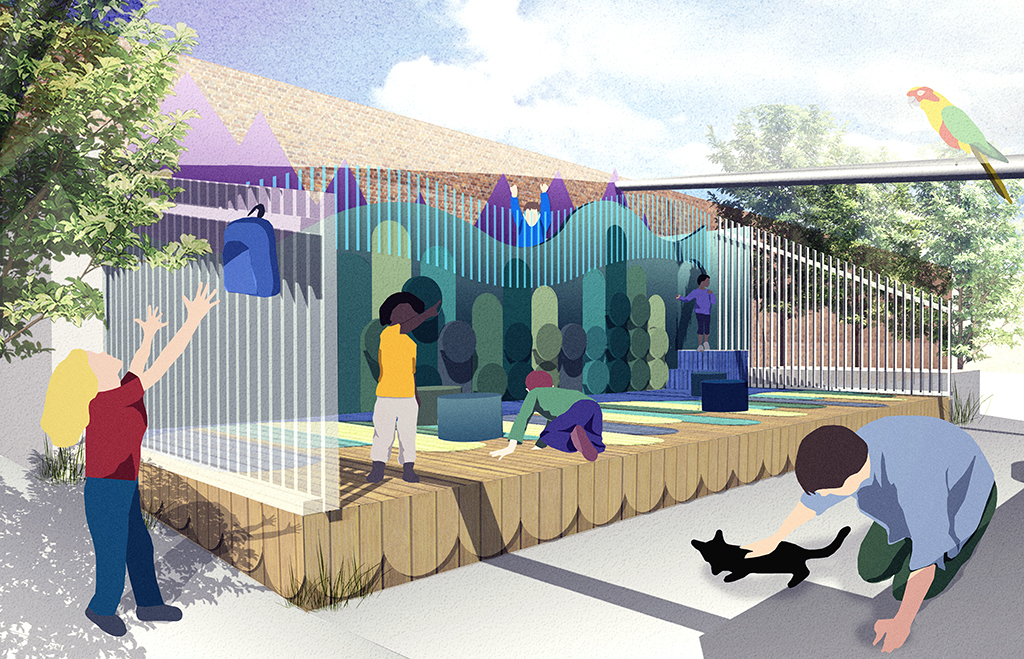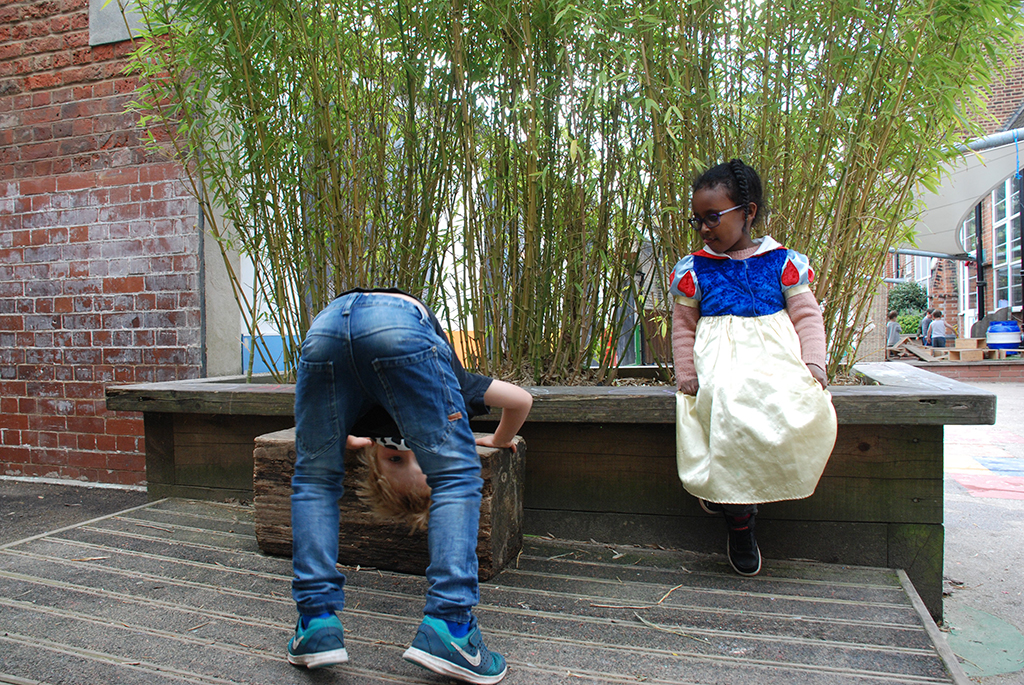Designing Places For Play
< Back to InsightsPlay is a serious matter. Play is what naturally happens when children are given space and freedom, are left to their own devices and allowed to explore and experience their own world outside the control of adults. This is an essential part of cognitive and social development, and an vital part of being human. Children need both free and available time, independence from adults and suitable flexible spaces to learn about their world though play. When designing places for play, we are ultimately designing for learning and development, and these spaces should be a lot more than an assembly of pieces from a play equipment catalogue.

There are links between children that are allowed to take risks at an early age and ability to handle risk and independently make sound decisions later in life, however since the 1970’s the distance children are permitted to roam away from home has decreased by 90%. This decline to play freely is attributed to increased parental fears of abduction and road accidents, it seems our children are no longer free range. In addition to this there are academic pressures, organised activities, a focus on specific learned outcomes and a huge surge in access to screens. Simultaneously play deprivation is linked to a variety of negative factors such as issues with mental health, childhood depression and obesity, therefore including opportunities and spaces for unrestricted play when we plan and design our surroundings is an absolute priority.

Both Thea Hartmann (Akitektur N) and Phineas Harper (Dezeen) criticise the focus on security in recent development of play spaces for children both in the UK and Scandinavia. Playgrounds are now designed with safety rather than play in focus, and the results are different combinations of the same risk assessed and EU certified play systems. Additionally, the parts of our physical environment that are open and flexible are more often than not littered with “no ball games” and “no skating” signs, ironic when free play has been found to be more effective in halting weight gain in obese children than exercise and food programmes combined. We need to include well designed, flexible, non-prescriptive areas for play in our neighbourhoods and urban environments. Spaces for play should be an integrated part of well-designed parks, squares and other public spaces which would encourage children to simply play within the environments that exist, rather than a pre-determined area and idea of play such as a ‘play-ground’; The spaces should not be restricted by opening times, fences or gates or monitored by guardians. By moving away from the catalogue sets of playground equipment and rather allowing for more flexible, free and robust designs, areas for play could be enjoyable for children and adults alike.

Parents should start to demand better play spaces for their children, and these spaces should be just as important as other aspects of public space, and deserve more research based and creative design. Dutch Architect Aldo von Eyck created over seven hundred playgrounds across Amsterdam after WW2. Through minimalist design stimulating curiosity and imagination, he combined place-making, urban design and play spaces. His work acts as a reminder that challenging and appealing environments for children can be integrated in our urban fabric, our cities can be more enjoyable for all if we allow for free play.
“Through play, children learn… about themselves, their relationships with others and the wider world… play and learning are not separate – play is part of learning and learning is part of play”. National Union of Teachers, April 2015.

** To raise funds for an outdoor classroom we have designed for Highgate Primary School we are co-hosting a fundraising dinner this FRIDAY 25th MAY at OMVED GARDENS – for info and ticket head over the Eventbrite **
Let’s have a chat about your vision and
how we can help you realise it.
Collective Works are an architecture & design studio. Our network of professionals will create your perfect solution.